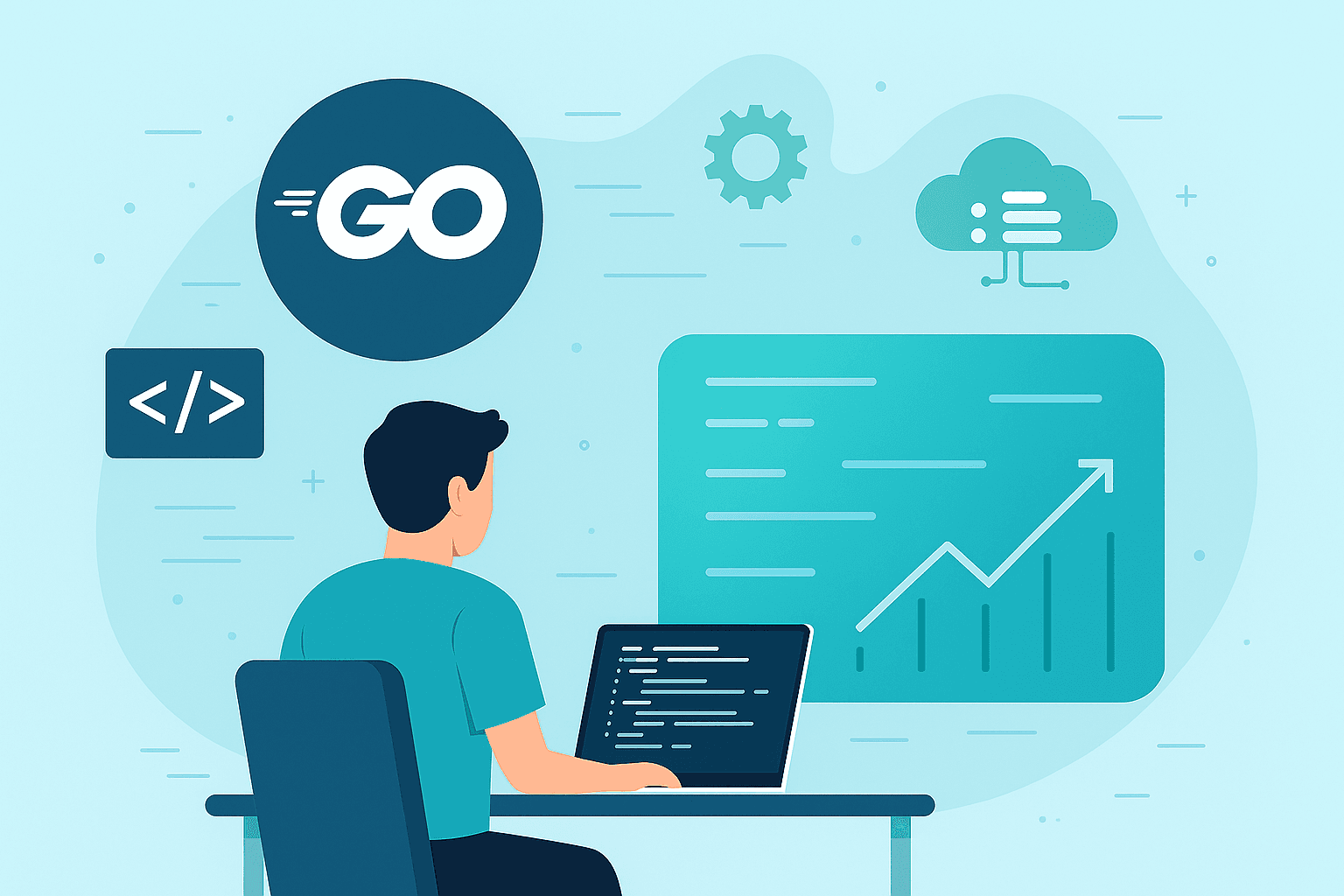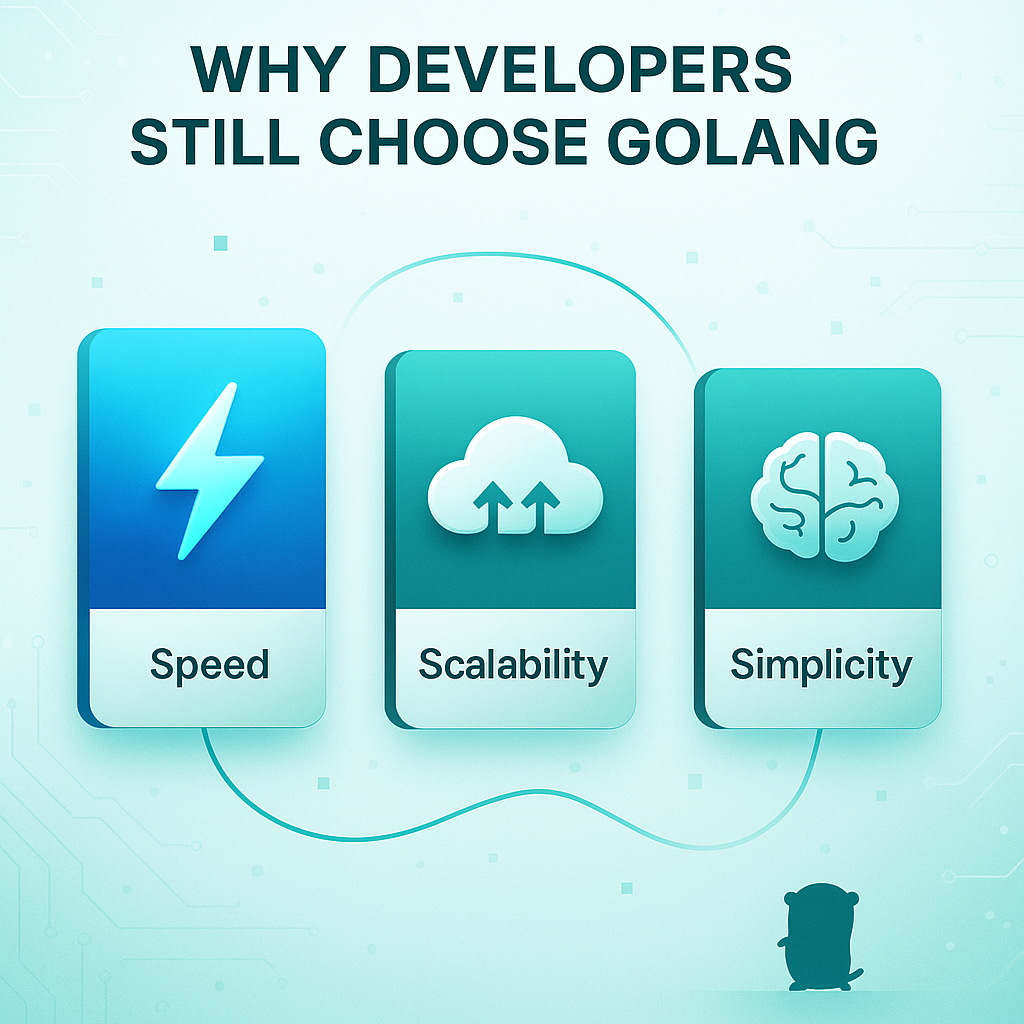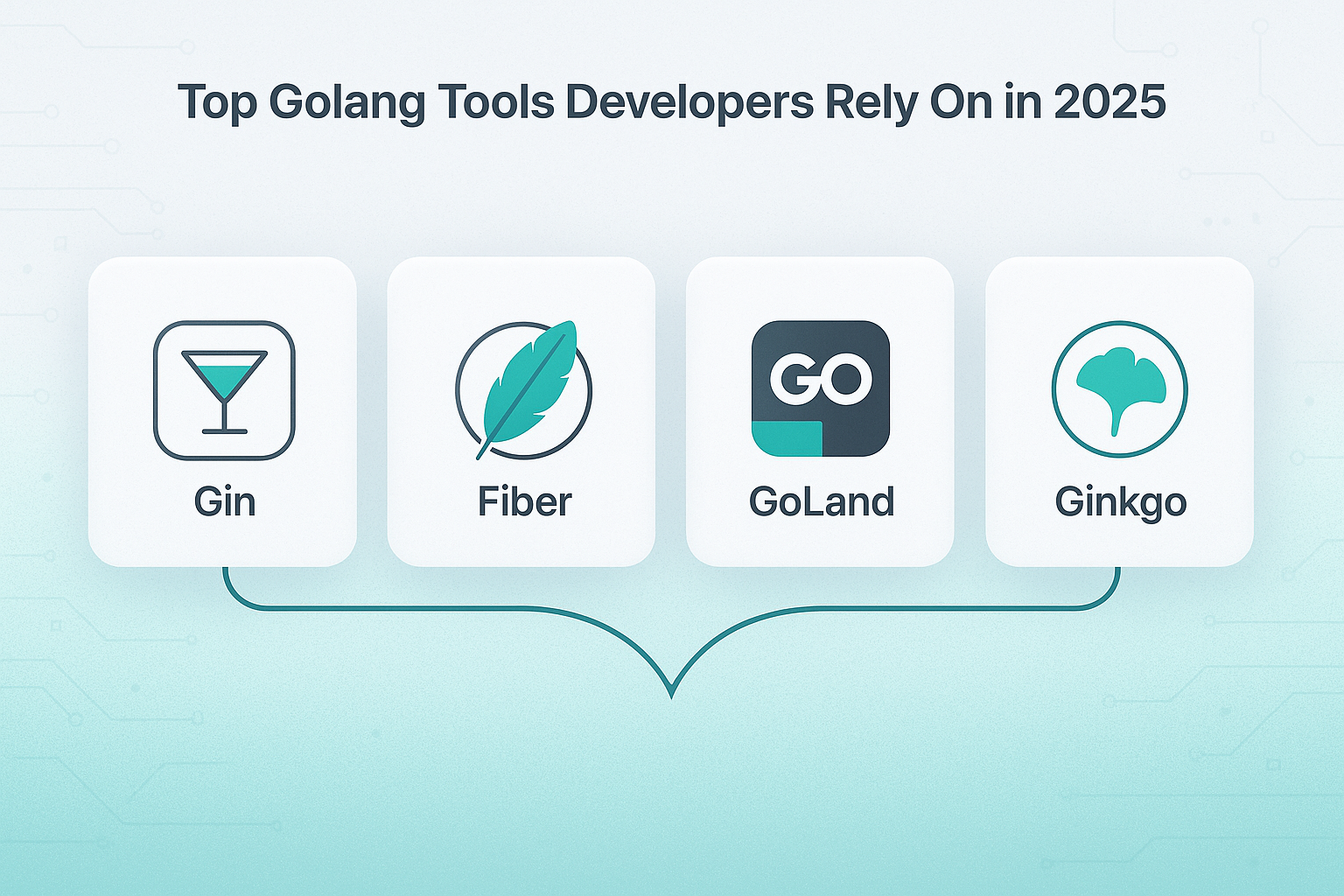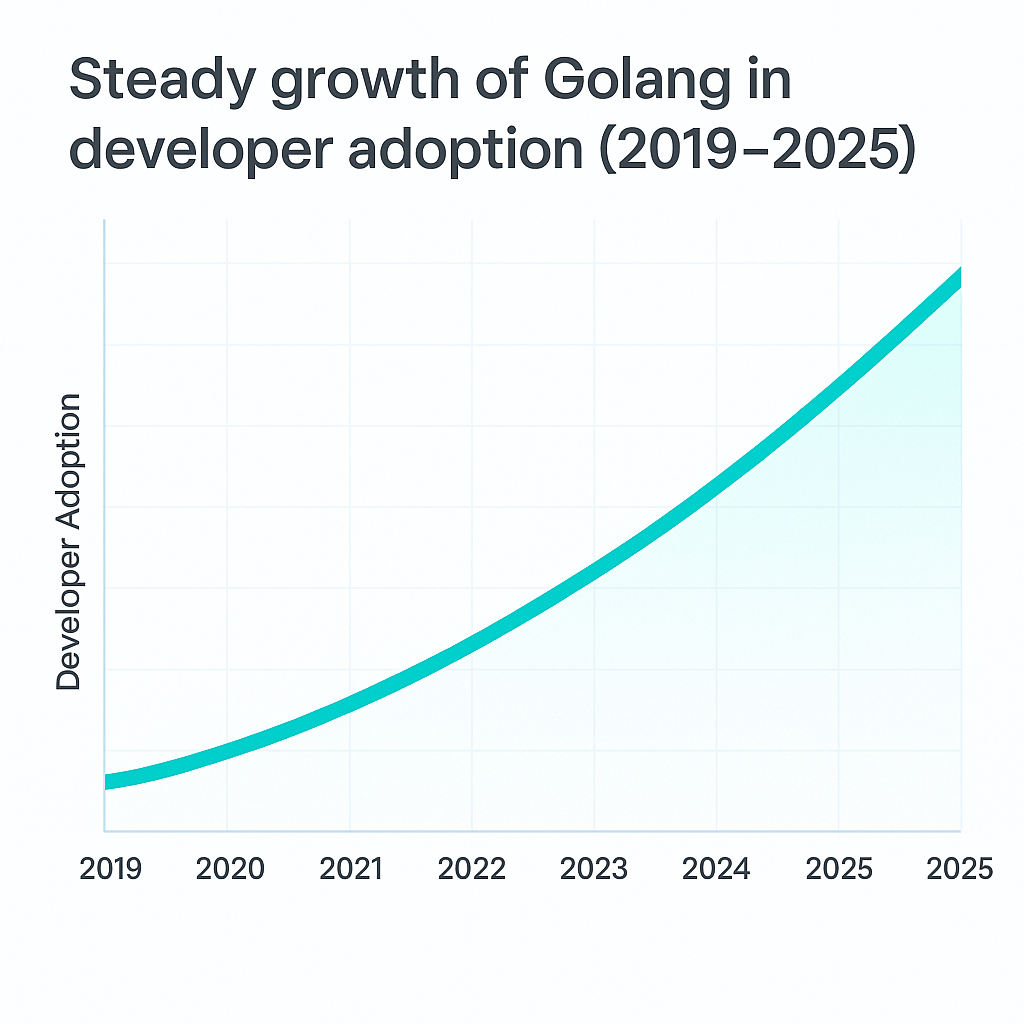-
Delivers fresh 2025 insights on how Golang is evolving across AI, cloud, and cross-platform systems.
-
Compares Golang vs Rust, Python, and Java with real-world clarity, helping readers make an informed tech choice.
Is Golang Still the Right Choice in 2025?

Technology moves fast, but some innovations stay relevant far longer than expected.
Think about how many programming languages have come and gone, yet Golang still holds strong.
So, is Golang still the right choice in 2025?
If you’re building modern web apps, APIs, or cloud systems, the Go programming language continues to deliver exceptional performance, simplicity, and reliability.
In fact, Google’s Go language now powers much of the internet from Kubernetes and Docker to backend systems at Uber and Netflix.
The question isn’t if Go is still relevant — it’s why developers keep choosing it.
Why Golang Remains a Top Pick in 2025
Golang was designed by Google engineers who wanted a faster, cleaner, and more scalable language for massive systems. That same design philosophy makes it perfect for today’s high-demand world of distributed apps and cloud development.
Here’s why Go language still dominates:
- Speed & Efficiency: Go is a compiled language that produces fast executables with minimal overhead.
- Simplicity: Its syntax is straightforward and readable, developers can learn Go programming language quickly.
- Cloud-ready: Go’s native support for concurrency makes it ideal for microservices and serverless computing.
- Scalability: Horizontal scaling in cloud environments is simple with Go’s lightweight goroutines.
- Reliability: A strong GoLang community ensures constant updates, frameworks, and tools.
That combination explains why golang popularity continues to grow across startups, enterprises, and open-source projects in 2025.

What’s New in Golang 2025
The golang 2025 ecosystem has expanded dramatically.
Let’s look at the major advancements developers are excited about this year:
- Improved performance with Go 1.23, delivering faster garbage collection and reduced memory leaks.
- AI and ML integrations via frameworks like GoLearn and Gorgonia.
- Cross-platform development, especially for macOS and Windows, is smoother than ever.
- WebAssembly support lets developers run Go directly in browsers.
- Better package management and version control simplify team collaboration.
These updates prove that Go is no longer “just a backend language.”
It’s now powering AI systems, web apps, DevOps, and even edge computing solutions.
Go Programming Language at a Glance
|
Feature |
Golang (Go) |
Rust |
Python |
Java |
|
Compilation Speed |
Very Fast |
Moderate |
Slow |
Moderate |
|
Concurrency Support |
Excellent (Goroutines) |
Advanced |
Limited |
Moderate |
|
Learning Curve |
Easy |
Hard |
Easy |
Moderate |
|
Performance |
Near C-level |
Excellent |
Slower |
High |
|
Best Use Cases |
Cloud, APIs, Web Dev |
System Apps |
Data Science |
Enterprise Apps |
Go offers a balance between power and simplicity — one reason the golang market continues to expand.
Real-World Adoption: Who Uses Golang in 2025
The world’s top tech companies rely on Go language for mission-critical projects.
- Google Go programming language powers internal services and APIs.
- Uber uses Go for handling millions of concurrent requests.
- Dropbox rewrote key systems in Go for speed and stability.
- Twitch and Netflix use it for streaming and load balancing.
When asked why use golang, most teams mention one thing — it just works.
Its compiled speed, easy debugging, and lightweight concurrency help developers focus on product growth, not maintenance.
As Brian Ketelsen, a Go contributor, famously said:
“Go’s simplicity isn’t a limitation. It’s what keeps your code alive.”
Why Developers Still Choose Golang Over Others
Go vs. Rust
-
Rust is secure and powerful, but complex.
-
Go delivers nearly the same performance with a fraction of the learning curve, making it a better fit for teams that value speed and simplicity.
Go vs. Python
-
Python wins in data science, but for web APIs, microservices, or cloud functions, Go performs 5–10x faster.
-
Its static typing reduces runtime bugs, improving stability.
Go vs. Java
- Java remains popular in large enterprises, but Go outshines it in startup agility.
- Shorter build times and smaller binaries give Go the edge in cloud-native applications.

Top Golang Tools & Frameworks in 2025
If you’re exploring Go language web development, these are must-try tools:
- Gin & Fiber: High-performance web frameworks for APIs.
- Echo: A fast, lightweight solution for microservices.
- GoLand IDE: A JetBrains IDE that simplifies debugging and refactoring.
- Go Test & Ginkgo: Industry-standard testing tools.
- Go.dev: The official Go hub for documentation and package discovery.
Installing and setting up Go is simple. You can download Go directly from go.dev or install Go via your OS package manager.

Why Golang Fits the Future of Development
As we move further into 2025, the future of Go language looks promising.
Here’s why:
- Cloud adoption is growing, and Go is designed for scalability.
- Serverless computing prefers lightweight compiled languages.
- AI infrastructure increasingly depends on Go for model orchestration.
- Cross-platform compatibility makes it great for macOS, Linux, and Windows.
- Active community ensures continuous innovation and support.
The golang growth curve proves that Go isn’t slowing down — it’s evolving into one of the most stable and future-ready technologies available.

The Future of Golang: More Than Just Code
Beyond tech specs, Go’s community-driven growth is what keeps it thriving.
It’s open-source, transparent, and built for collaboration, qualities that resonate with today’s developers.
Search trends for what is golang used for, why use go programming language, and golang future show increasing curiosity and demand from global dev teams.
This momentum reflects a language that has truly gone mainstream.
Wrapping It Up
So, is Golang still the right choice in 2025?
Without question — yes.
It’s fast, scalable, and constantly improving. Whether you’re exploring Go programming language Google, building microservices, or planning web applications, Go offers the balance of reliability and innovation you need.
If you’re ready to future-proof your software, Go language is still one of the smartest investments you can make.

Get the best of our content straight to your inbox!
By submitting, you agree to our privacy policy.


